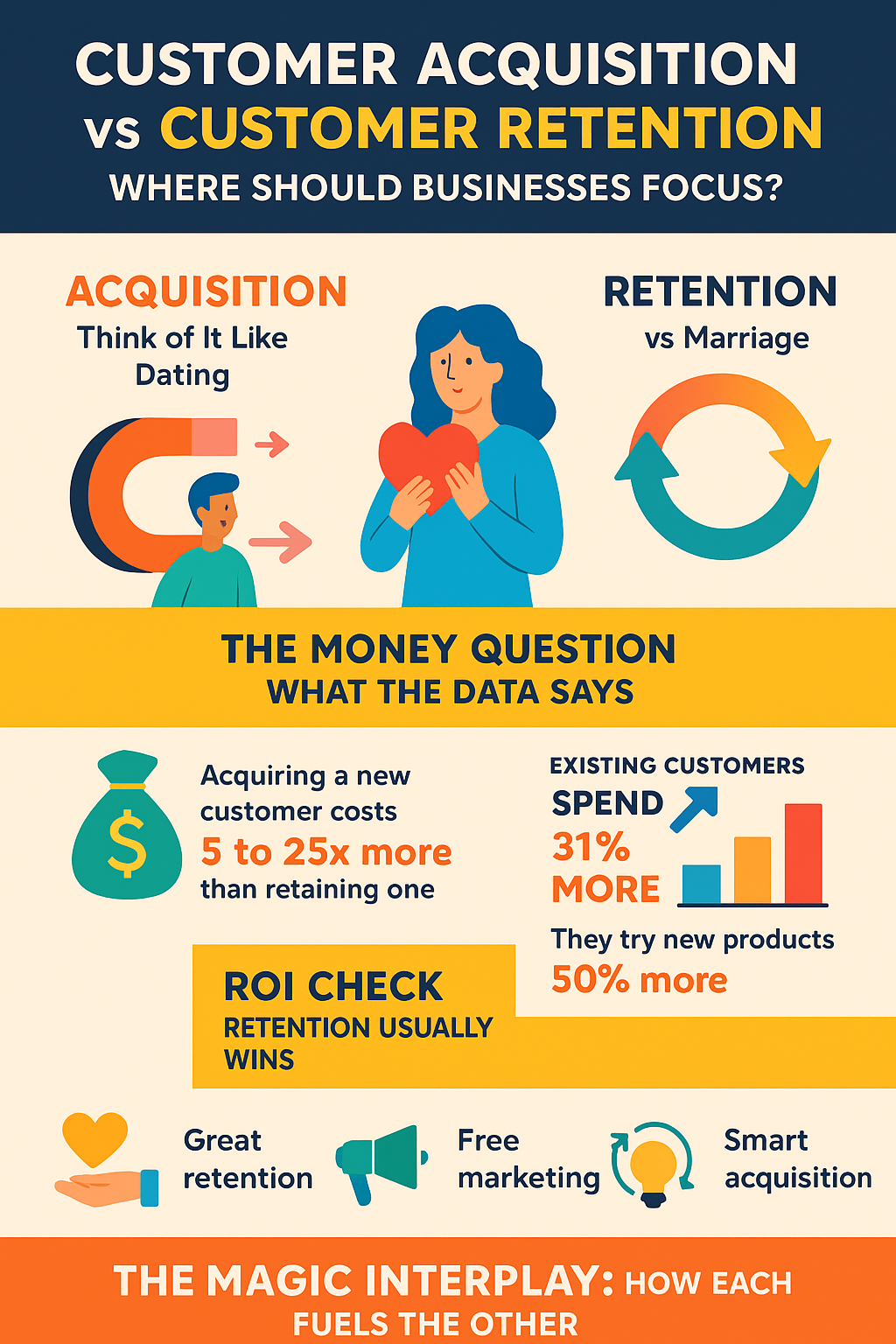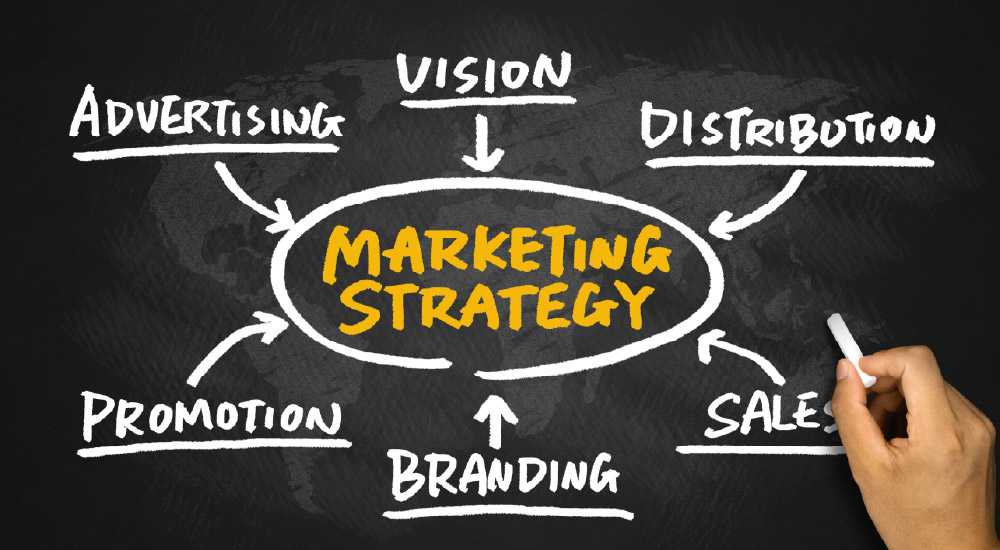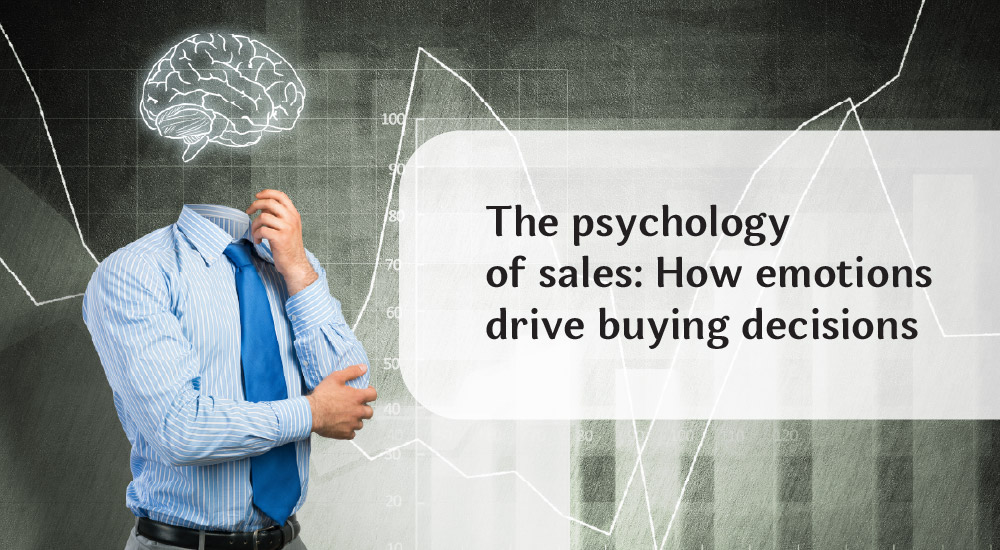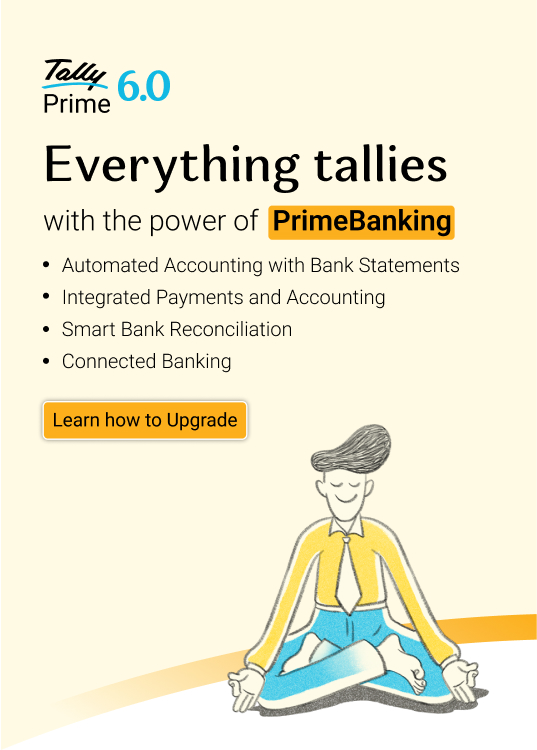Let’s be honest: few things feel better than watching your marketing machine click into place. Leads are rolling in, phones won’t stop buzzing, and your sales team is finally smiling instead of sulking.
That’s the dream, right?
Well, almost.
Because while you’re busy celebrating all those shiny new customers, your old ones might already be slipping out the back door. They’re leaving WhatsApp groups, ignoring your emails, or quietly choosing a competitor. And just like that, your leaky bucket problem begins.
This is the classic marketing tug-of-war: customer acquisition vs customer retention.
So, which one deserves more of your focus (and budget)? Let’s break it down.
Acquisition vs retention: Think of it like dating vs marriage
Acquisition is that adrenaline rush of first dates—the flowers, the grand gestures, the discounts and irresistible offers. Retention, on the other hand, is about building a marriage that lasts—personalisation, trust, loyalty rewards, and great service.
You can’t build a brand on first dates alone. And you can’t stay in the game if you ignore new people altogether. You need both—but the balance changes depending on where you are in your business journey.
The money question: What does the data say?
Let’s look at the numbers (because feelings don’t keep the lights on):
-
Acquiring a new customer costs 5 to 25x more than retaining one.
-
Existing customers spend 31% more than newbies.
-
They try new products 50% more often.
-
Even a tiny 5% bump in retention can boost profits by 25–95%.
So yes, new customers are exciting—but your existing ones are basically your profit engine.
ROI check: Retention usually wins
Why does retention almost always deliver better returns?
-
Lower costs: You’ve already paid the acquisition bill.
-
Free marketing: Happy customers bring in friends, leave glowing reviews, and sing your praises louder than any ad.
-
Repeat purchases: Loyal customers are 70% more likely to buy again.
Retention is like compound interest—the longer you nurture it, the bigger it grows.
So… should you drop acquisition altogether?
Not so fast. Your focus should shift depending on your stage and industry:
-
Early-stage/startups: Go all-in on acquisition. You need a base before you can retain anyone. Think performance marketing, irresistible first offers, and strong onboarding.
-
Mature businesses: Retention becomes king. Increase CLV (Customer Lifetime Value) and let loyal customers fuel referrals and organic growth.
-
FMCG: Focus on repeat purchases with loyalty programmes.
-
SaaS/subscription brands: Fight churn like your life depends on it (because your MRR does).
-
Retail: Balance both. Acquisition drives footfall, but retention drives profits.
-
D2C brands: Retention is everything—word of mouth is your rocket fuel.
-
Seasonal businesses: Loyal customers are your lifeline when peak season hits.
The magic interplay: How each fuels the other
Here’s where the tug-of-war turns into a dance:
-
Great retention = better acquisition. Loyal customers write reviews, spread the word, and attract more people to your brand.
-
Smart acquisition = easier retention. If your onboarding, service, and product are strong, new customers are more likely to stick.

The real trick? Don’t think of acquisition and retention as separate. Build customer journeys, not just campaigns. Understand where people find you, how they buy from you, and why they come back.
The big picture: Grow relationships, not just reach
Acquisition is fun—it’s the chase, the thrill, the “we signed 1,000 new customers this month” high. Retention is quieter, but it’s the reason your P&L sheet doesn’t give you sleepless nights.
The best businesses don’t choose. They create systems where acquisition fuels retention, and retention powers acquisition.
That’s the flywheel effect—the real growth hack no one talks about enough.
So, if you’re ready to stop playing tug-of-war and start playing chess, Smart Moves by Tally has resources to help you master both sides of the game.
Because in business, the real win isn’t just getting customers. It’s keeping them.


















